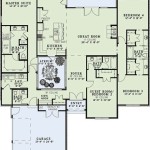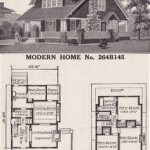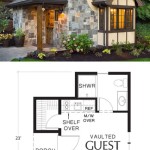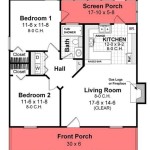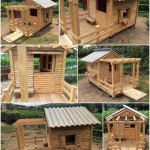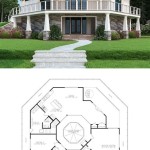Build Your Dream Home: House Design Plans For Every Style of Architecture
Designing and constructing a new home represents a significant undertaking, requiring meticulous planning and a clear understanding of architectural styles. House design plans serve as the foundational blueprint, translating abstract ideas into concrete specifications for builders and contractors. Selecting the appropriate design plan that aligns with personal preferences and desired architectural aesthetics is crucial for realizing a homeowner’s vision.
The process of choosing a house design plan extends beyond mere aesthetics. It involves considerations related to functionality, budget, lot size, local building codes, and energy efficiency. Each architectural style possesses unique characteristics, dictating the layout, materials, and overall construction approach. This article explores various architectural styles and their corresponding house design plan considerations, providing a comprehensive guide for prospective homeowners embarking on the journey of building their dream home.
Understanding Architectural Styles and Their Underlying Principles
Architectural styles are classified based on distinct visual characteristics, construction techniques, and historical influences. Recognizing these styles is essential for selecting a house design plan that accurately reflects the desired aesthetic. Furthermore, understanding the underlying principles of each style ensures consistency in design elements and material choices throughout the construction process. Several popular architectural styles are described below.
Ranch Style: Ranch-style homes, popularized in the mid-20th century, are characterized by their single-story design, open floor plans, and attached garages. They typically feature low-pitched roofs, wide eaves, and large windows, often incorporating sliding glass doors that lead to outdoor patios. Ranch designs emphasize accessibility and ease of living, making them particularly suitable for families with young children or individuals with mobility limitations.
Craftsman Style: Originating from the Arts and Crafts movement, Craftsman homes emphasize handcrafted details, natural materials, and a connection to the surrounding landscape. Key features include exposed rafters, wide front porches supported by tapered columns, and low-pitched gabled roofs. Interior spaces often feature built-in cabinetry, hardwood floors, and fireplaces, reflecting a commitment to quality and craftsmanship.
Modern Style: Modern architecture, which emerged in the early 20th century, prioritizes functionality, simplicity, and the use of modern materials such as steel and glass. Modern homes typically feature clean lines, flat roofs, and large expanses of glass that maximize natural light. Open floor plans are common, emphasizing a sense of spaciousness and connectivity. Modern designs often incorporate sustainable building practices, such as solar panels and energy-efficient windows.
Traditional Style: Traditional architecture encompasses a wide range of styles, drawing inspiration from various historical periods and regional influences. These styles often feature symmetrical facades, formal layouts, and decorative elements such as columns, moldings, and cornices. Traditional homes typically exude a sense of elegance and timelessness, reflecting a commitment to classical principles of design.
Victorian Style: Victorian homes, popular during the 19th century, are characterized by their ornate details, elaborate ornamentation, and asymmetrical facades. They often feature steeply pitched roofs, turrets, bay windows, and decorative trim. Victorian interiors are typically characterized by high ceilings, intricate moldings, and formal living spaces, reflecting the opulence and grandeur of the era.
Farmhouse Style: Farmhouse architecture evokes a sense of rustic charm and simplicity, drawing inspiration from traditional rural homes. Key features include board-and-batten siding, large front porches, and gabled roofs. Farmhouse interiors often feature exposed beams, hardwood floors, and shiplap walls, creating a warm and inviting atmosphere. Modern farmhouse designs often incorporate contemporary elements, such as open kitchens and spacious living areas, while retaining the traditional aesthetic.
Key Considerations When Selecting House Design Plans
Choosing the right house design plan involves careful consideration of several factors beyond architectural style. These factors encompass functionality, budget, site conditions, and long-term living requirements. A comprehensive assessment of these considerations will ensure that the chosen design plan meets the homeowner’s needs and expectations.
Budget and Affordability: Establishing a realistic budget is paramount before embarking on the process of selecting a house design plan. Construction costs can vary significantly depending on the size, complexity, and materials used in the design. Obtaining quotes from multiple builders and contractors is essential for accurately estimating the total cost of construction. It is also important to factor in additional expenses such as permits, landscaping, and interior finishes.
Lot Size and Site Conditions: The size and characteristics of the building lot will significantly influence the choice of house design plan. Smaller lots may require compact designs with a smaller footprint, while larger lots may accommodate more expansive designs. Site conditions such as topography, soil type, and drainage patterns must also be considered, as they can impact the foundation design and overall construction process. A geotechnical survey is recommended to assess the soil conditions and identify any potential challenges before finalizing the design plan.
Functionality and Lifestyle: House design plans should be tailored to the specific needs and lifestyle of the homeowner. Considerations include the number of bedrooms and bathrooms, the size and layout of living spaces, and the functionality of the kitchen and dining areas. Families with young children may prioritize open floor plans and dedicated play areas, while individuals who work from home may require a dedicated office space. The design should also account for future needs, such as aging in place or accommodating growing families.
Energy Efficiency and Sustainability: Incorporating energy-efficient features into the house design plan can significantly reduce utility bills and minimize environmental impact. Energy-efficient windows, insulation, and HVAC systems can improve the thermal performance of the home and reduce energy consumption. Solar panels, rainwater harvesting systems, and other sustainable technologies can further enhance the energy efficiency and environmental sustainability of the design. Building codes now often mandate certain energy efficiency standards.
Local Building Codes and Regulations: House design plans must comply with all applicable local building codes and regulations. These codes address various aspects of construction, including structural integrity, fire safety, and accessibility. Obtaining the necessary permits and approvals from local authorities is essential before commencing construction. Consulting with a qualified architect or building designer is recommended to ensure compliance with all relevant codes and regulations.
Utilizing Resources for Finding and Customizing House Design Plans
Numerous resources are available to assist homeowners in finding and customizing house design plans. These resources include online plan providers, architectural firms, and design-build companies. Each resource offers unique advantages and capabilities, catering to different needs and preferences.
Online Plan Providers: Online plan providers offer a vast selection of pre-designed house plans in various architectural styles and sizes. These plans are typically more affordable than custom-designed plans, making them a popular option for budget-conscious homeowners. However, it is important to carefully review the plans and ensure that they meet all local building codes and regulations. Many online providers offer customization options, allowing homeowners to modify the plans to suit their specific needs.
Architectural Firms: Architectural firms provide comprehensive design services, from initial concept development to construction documents. Architects work closely with homeowners to understand their needs and preferences, developing custom designs that are tailored to their specific site and budget. Architects can also assist with obtaining permits and approvals from local authorities. Hiring an architect can be a more expensive option than using pre-designed plans, but it offers the advantage of a fully customized design.
Design-Build Companies: Design-build companies offer a streamlined approach to house construction, providing both design and construction services under one roof. This integrated approach can simplify the process and improve communication between the design and construction teams. Design-build companies typically work with a team of architects, engineers, and contractors, providing a comprehensive solution for homeowners. This integrated model can potentially reduce project timelines and costs compared to hiring separate designers and contractors.
Customizing Existing Plans: It is often possible to customize existing house design plans to better suit the homeowner’s needs and preferences. Common customizations include modifying the floor plan, adding or removing rooms, and changing the exterior finishes. Customizing existing plans can be a cost-effective way to achieve a unique design without the expense of starting from scratch. However, it is important to work with a qualified architect or building designer to ensure that the modifications are structurally sound and comply with local building codes.
Ultimately, the selection of a house design plan represents a significant investment of time, resources, and emotional energy. By carefully considering architectural styles, budget constraints, site conditions, and personal preferences, prospective homeowners can navigate the design process effectively and realize their dream of building a beautiful and functional home. Consulting with experienced professionals, such as architects, builders, and designers, is highly recommended to ensure a successful and rewarding building experience.

Dream House Plans Designs Customizable Home Floor

How To Design A House From Sketch Reality

Dream House Plans Designs Customizable Home Floor

Create And Visualize House Plans In Minutes Roomsketcher

House Plans Floor Blueprints

Beautiful Three Bedroom House Plans Blog Floorplans Com

Online House Floor Plans Your Best Guide To Home Layout Ideas Decorilla Interior Design

Create And Visualize House Plans In Minutes Roomsketcher

How To Draw A Floor Plan Live Home 3d

Uniquely You Bringing Your Dream Home To Life Grollo Homes
Related Posts

